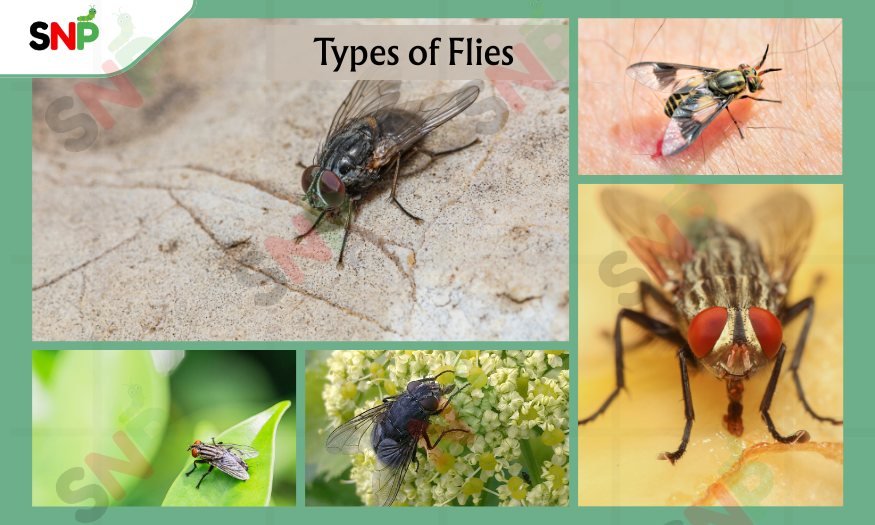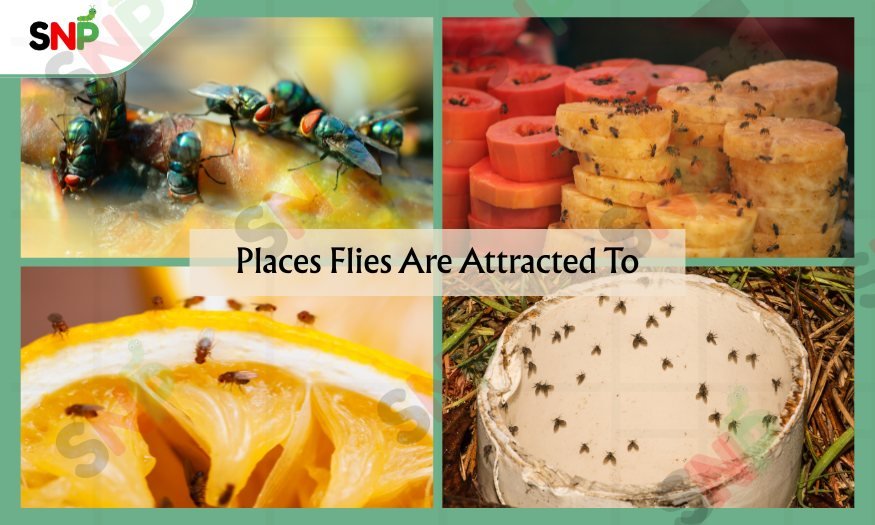Types of Flies & How to Stop Them

If you have ever inhaled an intruder who was buzzing in your kitchen, or seen tiny insects circling your fruit bowl, congratulations, flies have invaded your home. Flies are the most common insects that are sharing your home with you. To recognize the Types of Flies in your place and learn how to stop them is the first step to effective prevention and control.
How many species of flies exist?
There are 120,000 described species on a global scale with probably lots of those still yet to be discovered. In the United States, there are several Types of Flies, which enter the house, expose you to diseases, and, of course, make it uncomfortable for you to stay at home. Knowing the species enables you to direct your anti-insect actions and save your health.
Top 7 Types of Flies

The idea is to elucidate the most prevalent Types of Flies across the US.
1. House Flies
The classic nuisance, house flies are grey with four black stripes on their thorax and measure about 1/8–1/4 inch long. They reproduce in decaying organic materials like dung, and other waste from which they hatch fast due to favorable temperatures and are disease carriers.
2. Drain Flies (Moth Flies)
Drain flies are small, shaggy, and are often taken for moths mainly due to their coloring and size. Moist areas of the house like drains, sewer systems and sink lines provide a suitable breeding ground for these flies. They turn into larvae and eat up the leftover organic matter in the pipes which consequently combine to be a sign of plumbing problems or lack of hygiene.
3. Fruit Flies
Small, about 1/8 inch long, tan, or dark brown with red eyes shining, fruit flies are primarily attracted to ripe fruits, vegetables, and sweet liquids. The rapid breeding cycle of these flies allow females to produce 500 eggs which hatch into new flies within 24 hours thus causing fast infestations during summer.
4. Blow Flies
Green or Blue Bottle Flies are also called the blow flies because of their sparkling green coat. They are a bit bigger than house flies. These flies lay their eggs in decaying meat or carcasses and the presence of these flies can be an indicator of a sanitation problem or a rotten animal in walls or attics.
5. Fungus Gnats
These are one of the craziest groups of flies and these flies are quite similar to mosquitoes. Fungus gnat larvae utilize fungi and rotting plant matter as their food, even though they do not sting, they can be dangerous if they feed on your plant’s roots. The growth of the plant will stop.
6. Cluster Flies
Cluster flies are different from those of house flies since they are more prominent, with darker color that reside in lofts or wall voids, especially in late winter and spring. To get through winter, they gather in huge numbers indoors, but they neither breed nor spread diseases.
7. Horse Flies
Horse flies are larger, more violent, and they have itchy bites and are mostly found in water, next to the farm, and in the woods. They can cause allergic reactions besides the transmission of diseases to animals.
Places Flies Are Attracted To

The environments that attract flies consist of areas which offer food sources and moisture together and suitable breeding sites. All Types of Flies primarily have four main attractants:
- Flies seek out moist organic waste materials that exist in garbage containers and compost heaps and food leftovers. Both food sources and suitable breeding sites exist in unsealed trash and leftover food.
- Fruit flies along with various other fly species love overripe produce and sweet liquids including fermented beverages such as soda and liquor and vinegar.
- The breeding grounds for drain flies and fungus gnats exist in humid environments that standing water and moisture sources create including leaky pipes and water-filled plant saucers.
- House flies and blow flies are strongly in favor of to animal carcasses and pet waste because these items provide both food sources and breeding opportunities.
Know how to Prevent Flies
Keeping flies out requires a proactive approach. Here’s how you can deter all Types of Flies:
- Maintain Cleanliness
- Manage Moisture
- Seal Entry Points
- Use Traps and Baits
- Professional Help
Conclusion (Understanding the Types of Flies)
Effective pest control requires proper identification of the different fly species that invade residential and commercial spaces. Professional pest control experts are always there for you when pest infestations become challenging to manage. They will free you from fly infestations and provide a fly-free environment.
Related Posts
Introduction to Horse Fly Bites Stages
Each summer of the year across the United States arrive swarms of nuisances, one of the most irritating to humans and animals alike and the horse fly. It is advantageous to understand and be acquainted with the stages of horse fly bites in order to advance effective treatment, prevention, and overall comfort outdoors. Horse Fly […]
Black Fly Bites: All You Ever Wanted to Know
Introduction to Black Fly Bites Summer is a time of a lot of outdoor fun, but it also means a greater possibility of encountering some bugs few more stubborn in much of the US than black flies. Famous for their biting, stinging Black fly bites that itch you more than anything. These small bugs can […]
Introduction to Adult Life of a Crane Fly
You have darker summer nights and one of the long-legged flies is flying in and out of the front porch light on your porch. You are curious about the Adult Life of a Crane Fly. As foreboding in their size and bug-like in their appearance and similitude to a mosquito.They have a unique and harmless […]
Quick Link
Services
